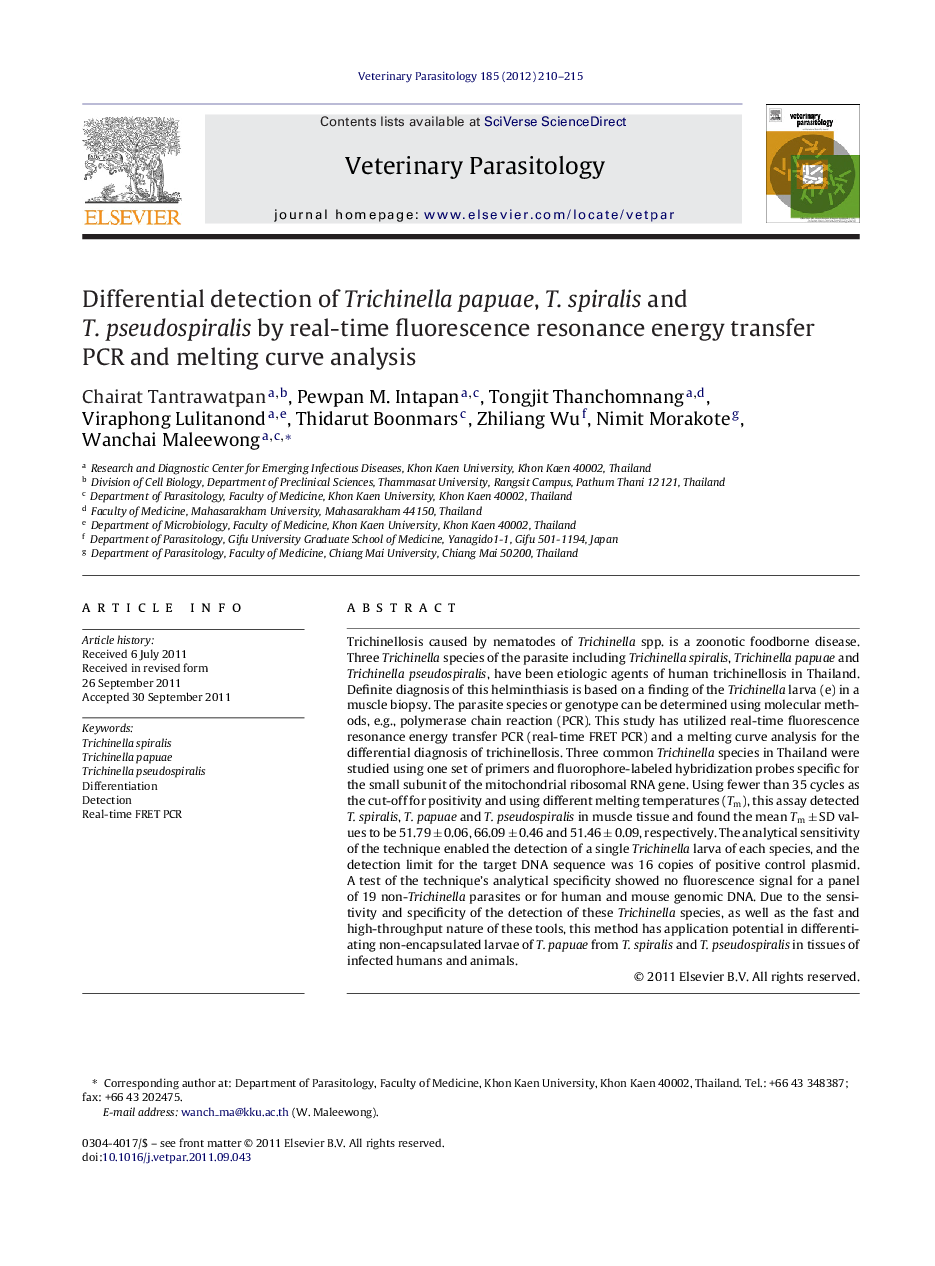| کد مقاله | کد نشریه | سال انتشار | مقاله انگلیسی | نسخه تمام متن |
|---|---|---|---|---|
| 5805134 | 1555716 | 2012 | 6 صفحه PDF | دانلود رایگان |

Trichinellosis caused by nematodes of Trichinella spp. is a zoonotic foodborne disease. Three Trichinella species of the parasite including Trichinella spiralis, Trichinella papuae and Trichinella pseudospiralis, have been etiologic agents of human trichinellosis in Thailand. Definite diagnosis of this helminthiasis is based on a finding of the Trichinella larva (e) in a muscle biopsy. The parasite species or genotype can be determined using molecular methods, e.g., polymerase chain reaction (PCR). This study has utilized real-time fluorescence resonance energy transfer PCR (real-time FRET PCR) and a melting curve analysis for the differential diagnosis of trichinellosis. Three common Trichinella species in Thailand were studied using one set of primers and fluorophore-labeled hybridization probes specific for the small subunit of the mitochondrial ribosomal RNA gene. Using fewer than 35 cycles as the cut-off for positivity and using different melting temperatures (Tm), this assay detected T. spiralis, T. papuae and T. pseudospiralis in muscle tissue and found the mean Tm ± SD values to be 51.79 ± 0.06, 66.09 ± 0.46 and 51.46 ± 0.09, respectively. The analytical sensitivity of the technique enabled the detection of a single Trichinella larva of each species, and the detection limit for the target DNA sequence was 16 copies of positive control plasmid. A test of the technique's analytical specificity showed no fluorescence signal for a panel of 19 non-Trichinella parasites or for human and mouse genomic DNA. Due to the sensitivity and specificity of the detection of these Trichinella species, as well as the fast and high-throughput nature of these tools, this method has application potential in differentiating non-encapsulated larvae of T. papuae from T. spiralis and T. pseudospiralis in tissues of infected humans and animals.
Journal: Veterinary Parasitology - Volume 185, Issues 2â4, 30 April 2012, Pages 210-215